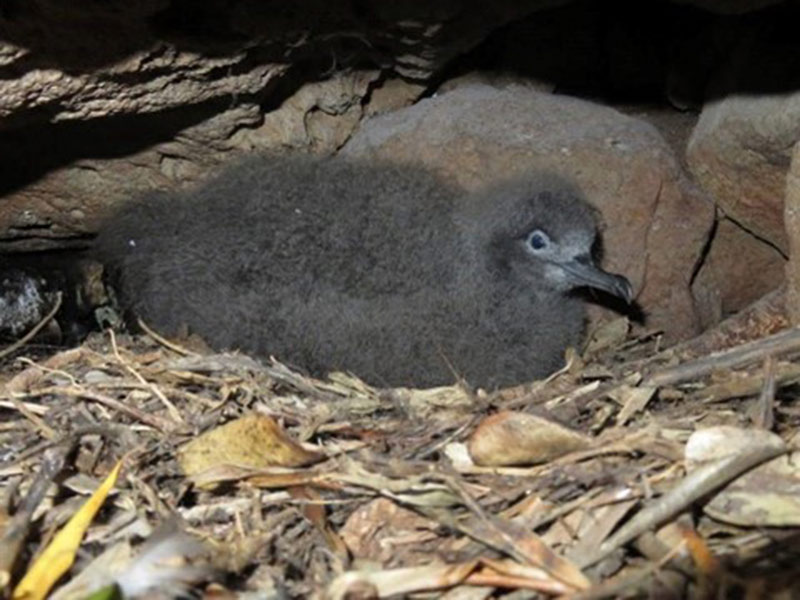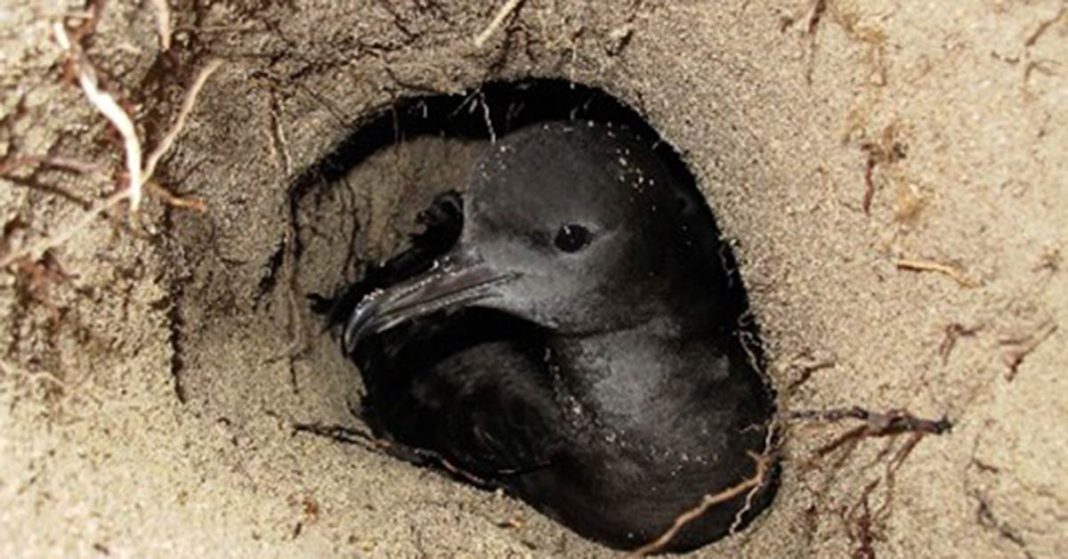Shearwater young have begun to emerge from their burrows on LHI. The two species of shearwater that breed near roads are the flesh-footed shearwater (Ardenna carneipes) and wedge-tailed shearwater (Ardeena pacificus).
Both are at risk of being run over by cars where their nesting colonies are dissected by roads.
Black-winged petrels (Pterodroma nigripennis) will also be fledging soon.
How you can help
Drivers can help to protect our young Shearwaters by slowing down around known nesting areas and taking the time to ‘shift a shearwater’ or ‘move a mutto’ off the road.
Shearwaters are clumsy on land and are disorientated and startled by lights. Driving around them is often not effective at preventing unwanted deaths.
Outdoor lights can also disorient and attract shearwaters – so turning yours off at this time of the year helps.
Their future is in our hands
Shearwaters arrive on LHI in late August, and start nesting in late November – early December. A single egg is laid per year in a burrow 0.2m to 3m in length, with pairs returning to the same burrow every year. It takes both adults to raise a chick successfully. If one parent dies, the chick is likely to die due to lack of food.
Flesh-footed shearwaters are listed as a vulnerable species and are in global decline. Ensuring that every nesting pair has the best chance to fledge young on LHI is an important step in reducing the decline of these magnificent seabirds.



